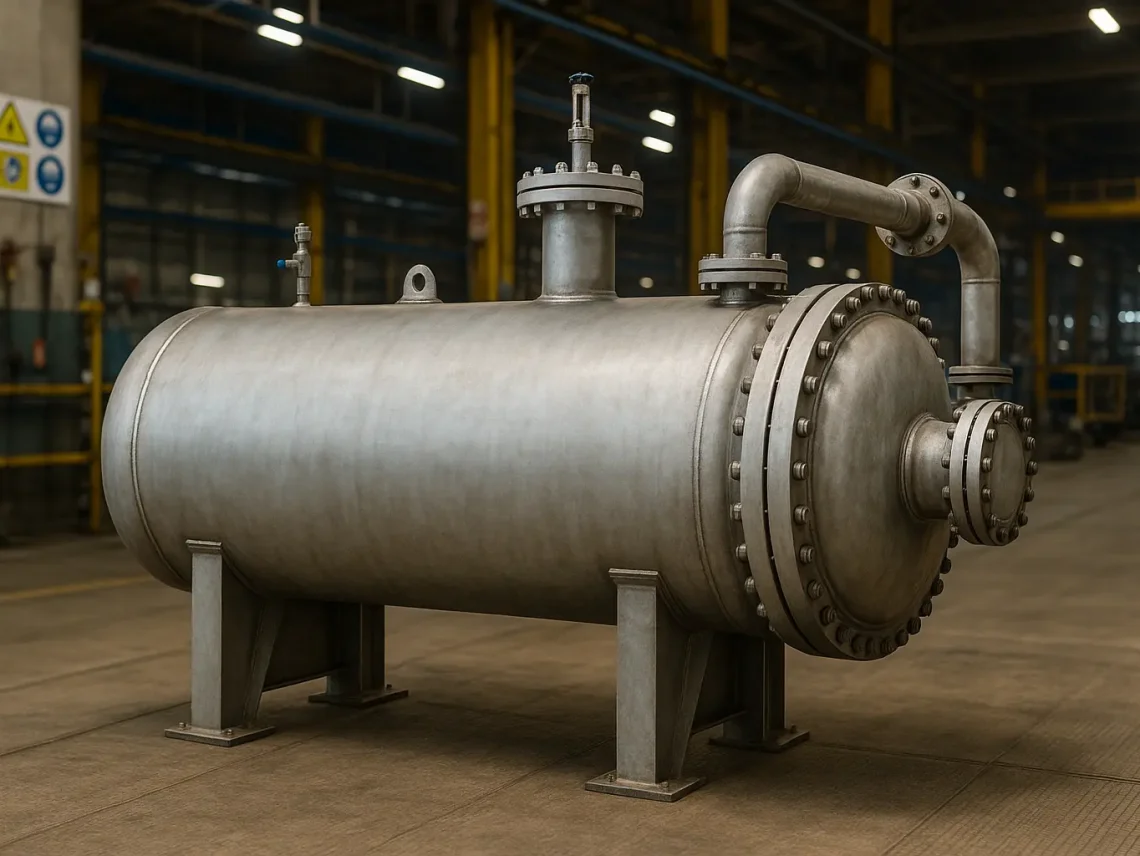
Table of Contents
ToggleASME Section VIII Division 1 sets the standards for designing and constructing pressure vessels, offering guidelines for materials, fabrication, inspection, and certification. At Red River LLC, we ensure every vessel meets these critical specifications for safety and performance.
ASME Section VIII is the cornerstone of pressure vessel design, ensuring safety, efficiency, and reliability in critical systems. For engineers and manufacturers, understanding Division 1 of this standard is fundamental for producing pressure vessels that comply with industry regulations. This division focuses on pressure vessels used in a range of industries, from power plants to oil refineries.
At Red River LLC, we specialize in designing and fabricating pressure vessels that meet the stringent requirements of ASME Section VIII Division 1. Whether you are designing a new vessel or maintaining an existing one, this guide will explain how Division 1 ensures safe, durable, and compliant pressure vessels.
ASME Section VIII Division 1 provides mandatory rules for the design, construction, and inspection of pressure vessels. It applies to pressure vessels that are designed to handle internal or external pressures exceeding 15 psi. Key components of Division 1 include:
For a detailed understanding of pressure vessel standards, including pressure vessel inspection guidelines, check out our guide on pressure vessel standards.
When designing a pressure vessel, it’s critical to consider various factors such as design pressure, temperature, and material properties. Division 1 serves as the foundation for pressure vessel design, focusing on methods that ensure compliance with safety standards without compromising functionality.
Red River LLC uses ASME Section VIII Division 1 as a benchmark in all our projects. From the initial design phase to fabrication and final inspection, every step adheres to these rigorous standards, ensuring the highest level of safety for our clients.
If you’re looking for a deeper dive into the different divisions, check out our article on understanding the differences between ASME Section VIII Divisions 1 and 2.
ASME Section VIII Division 1 has a significant role in industries such as:
At Red River LLC, we work with clients across various sectors to ensure that their pressure vessels are compliant with ASME standards, providing reliable and efficient solutions that support their operational needs.
For more on pressure vessel maintenance and compliance, visit our overview of pressure vessel standards.
ASME Section VIII Division 1 plays a critical role in maintaining safety and operational integrity in industries that rely on pressure vessels. Understanding these regulations is crucial for manufacturers, engineers, and safety officers to ensure that their vessels meet the necessary standards. At Red River LLC, we are committed to delivering high-quality pressure vessels that comply with the stringent requirements of Division 1.
At Red River LLC, we are experts in designing and manufacturing pressure vessels that meet ASME Section VIII Division 1 standards. Our team works closely with clients to ensure that every vessel is engineered for maximum safety, durability, and compliance.
Contact us today to discuss how we can help with your pressure vessel needs.
ASME Section VIII Division 1 focuses on traditional design rules, whereas Division 2 allows for more advanced design methods that offer greater efficiency and safety margins.
Compliance with Division 1 can be ensured by following the design, fabrication, and inspection criteria set out in the ASME Boiler & Pressure Vessel Code, and performing proper testing and inspections.
Yes, but only materials that meet the specified standards for strength, resistance to corrosion, and other properties required for high-pressure operations.
Regular inspections should be carried out throughout the lifecycle of a pressure vessel, with the frequency determined by the type of vessel, operational conditions, and regulatory requirements.
Non-compliance can lead to safety hazards, operational downtime, and legal consequences, including fines or loss of certification.
In the realm of industrial solutions, Red River emerges as a pioneer, offering a diverse range of custom-engineered products and facilities. Among our specialties is the design and production of Custom/OEM Pressure Vessels, meticulously crafted to meet individual client requirements, ensuring performance under various pressure conditions. Our expertise extends to the domain of prefabrication, where Red River leads with distinction.
The company excels in creating prefabricated facilities, modules, and packages, reinforcing its stance as a forerunner in innovation and quality. This proficiency is further mirrored in their Modular Skids offering, where they provide an array of Modular Fabricated Skid Packages and Packaged equipment. Each piece is tailored to client specifications, underlining their commitment to delivering precision and excellence in every project they undertake.